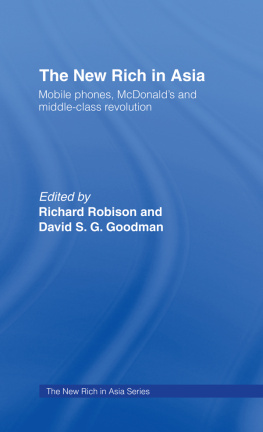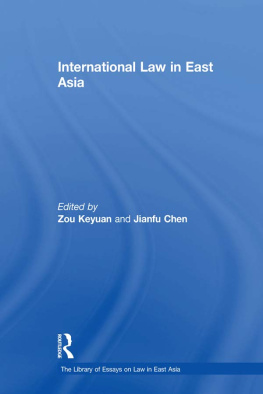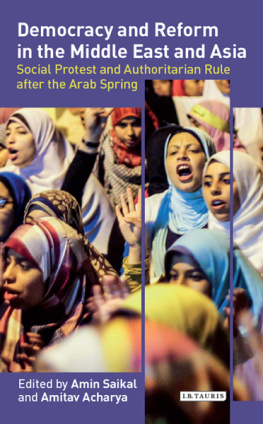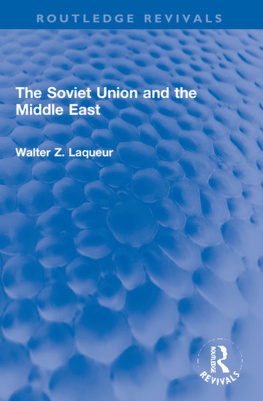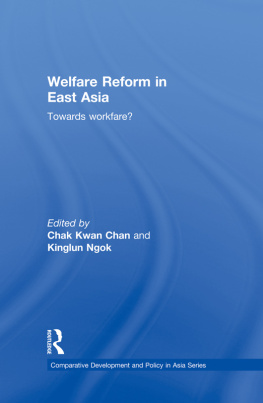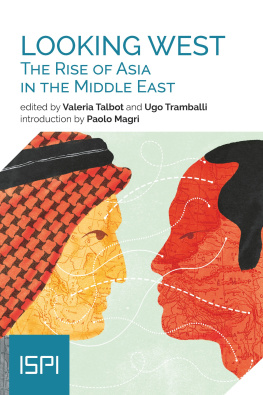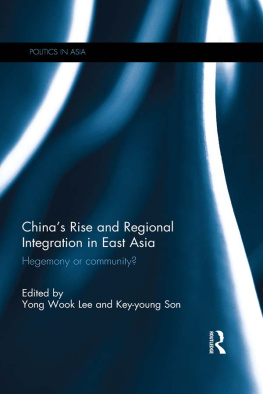ROUTLEDGE LIBRARY EDITIONS: MODERN EAST AND SOUTH EAST ASIA
Volume 3
COMMUNISM AND REFORM IN EAST ASIA
COMMUNISM AND REFORM IN EAST ASIA
Edited by
DAVID S. G. GOODMAN
First published in 1988 by Frank Cass and Company Limited
This edition first published in 2015
by Routledge
2 Park Square, Milton Park, Abingdon, Oxon, OX14 4RN
and by Routledge
711 Third Avenue, New York, NY 10017
Routledge is an imprint of the Taylor & Francis Group, an informa business
1988 Frank Cass & Co. Ltd.
All rights reserved. No part of this book may be reprinted or reproduced or utilised in any form or by any electronic, mechanical, or other means, now known or hereafter invented, including photocopying and recording, or in any information storage or retrieval system, without permission in writing from the publishers.
Trademark notice: Product or corporate names may be trademarks or registered trademarks, and are used only for identification and explanation without intent to infringe.
British Library Cataloguing in Publication Data
A catalogue record for this book is available from the British Library
ISBN: 978-1-138-89258-3 (Set)
elSBN: 978-1-315-69792-5 (Set)
ISBN: 978-1-138-90132-2 (Volume 3)
elSBN: 978-1-315-69783-3 (Volume 3)
Publishers Note
The publisher has gone to great lengths to ensure the quality of this reprint but points out that some imperfections in the original copies may be apparent.
Disclaimer
The publisher has made every effort to trace copyright holders and would welcome correspondence from those they have been unable to trace.
COMMUNISM AND REFORM IN EAST ASIA
Edited by
DAVID S.G. GOODMAN
First published 1988 in Great Britain by
FRANK CASS AND COMPANY LIMITED
Gainsborough House, 11 Gainsborough Road,
London E11 1RS, England
and in the United States of America by
FRANK CASS AND COMPANY LIMITED
c/o Biblio Distribution Centre
81 Adams Drive, P.O. Box 327, Totowa, NJ 07511
Copyright 1988 Frank Cass & Co. Ltd.
British Library Cataloguing-in-Publication data
Communism and reform in East Asia.
1. East & South-east Asia. Communist countries. Social reform
I. Goodman, David S.G., 1948 II. The Journal of communist studies
303.484
ISBN 0-7146-3340-2
Library of Congress Cataloging-in-Publication Data
Communism and reform in East Asia.
This group of studies first appeared in a special issue of the Journal of communist studies, vol. 3.
Contents: Communism in East Asia / David S.G. Goodman The reform process in the Peoples Republic of China / Tony Saich Reform, local political institutions and the village economy in China / Elisabeth J. Croll [etc.]
1. CommunismEast Asia. 2. East AsiaPolitics and government 3. East AsiaSocial conditions. I. Goodman, David S.G.
HX410.5A6C65 1988 335.43095 88-5032
ISBN 0-7146-3340-2
This group of studies first appeared in a Special Issue on Communism and Reform in East Asia of The Journal of Communist Studies Vol. 3, No. 4 published by Frank Cass & Co. Ltd.
All rights reserved. No part of this publication may be reproduced, stored in a retrieval system, or transmitted in any form, or by any means, electronic, mechanical, photocopying, recording, or otherwise, without the prior permission of Frank Cass and Company Limited.
Printed and bound by
Adlard and Son Limited,
Dorking, Surrey, and Letchworth, Hertfordshire
Contents
David S.G. Goodman
Tony Saich
Elisabeth J. Croll
Delia Davin
Aidan Foster-Carter
James Cotton
Michael Williams
Judith Nordby
Gerald Segal
Michael B. Yahuda
In May 1987 the Journal of Communist Studies held its annual conference at the East Asia Centre, University of Newcastle upon Tyne. Appropriately the theme for the papers presented at that conference was Communism in East Asia, and this volume has resulted from that conference. Despite the fact that six of the worlds communist party states are concentrated in East Asia China, North Korea, Mongolia, Vietnam, Kampuchea, and Laos and that a seventh (the Soviet Union) is at least in some respects an East Asian power, those with an interest in communist studies still tend to regard it as a region on the periphery. One reason for that perspective may be the relative lack of literature on the subject. This volume cannot solve that problem but it can at least hope to take a step in the right direction.
Many people were involved in the organization of the conference that led to this volume, as well as in the production of the book itself. The invaluable assistance of the staff of the East Asia Centre with the former, and of Professor Ronald Hill with the latter ought particularly to be acknowledged. In addition the East Asia Centre and the editorial board of The Journal of Communist Studies would like to thank The Nuffield Foundation for its generous support.
DAVID S.G. GOODMAN
East Asia Centre,
University of Newcastle upon Tyne
ASEAN | Association of South East Asian Nations |
CCP | Communist Party of China |
CGDK | Coalition Government of Democratic Kampuchea |
CMEA | Committee for Mutual Economic Assistance [Comintern] |
CPSU | Communist Party of the Soviet Union |
GATT | General Agreement on Tariffs and Trade |
MPR | Mongolian Peoples Republic |
MPRP | Mongolian Peoples Revolutionary Party |
NIC | Newly Industrialized Country |
PECC | Pacific Economic Cooperation Conference |
PRC | Peoples Republic of China |
PRK | Peoples Republic of Kampuchea |
David S.G. Goodman
Western perceptions of communism in East Asia have changed dramatically during the last decade. Where once it was seen as a threat now the emphasis is on communism in reform. Moreover, because these communist party states are located at what is widely regarded as the centre of the Pacific Century, they have become economically as well as politically attractive within a relatively short period of time. The lure of China alone as an open market is a very seductive prospect for Western economies and businessmen. Equally, for the global strategists in the West, the possibility of isolating China and most of East Asia from Soviet influence appears attractive. The perceived Soviet need for a counter-balance is undoubtedly one reason Gorbachev has sought to emphasize the USSRs role in East Asia since his speech at Vladivostok in July 1986.1
There certainly does appear to be a reform process under way in the communist party states of East Asia. It can be said to have started in the Peoples Republic of China (PRC) at the third plenum of the eleventh Central Committee of the Chinese Communist Party (CCP) in December 1978. The CCP had tried for two years after the death of Mao Zedong to maintain the policies and structures of earlier years a kind of Maoism without Mao. However, by mid-1978 it became clear that a more radical break with the past was necessary if economic modernization one of the CCPs orginal long-term goals in 1949 were to be attained. Incrementally, new policies have been introduced which, for example, have decentralized the administration of the economy, reformed the price structure in favour of the market, de-collectivized agriculture, ended the state administrations monopoly in the economy, and severely restricted its role in new developments. In short, there has been a radical reform of the command economy.




